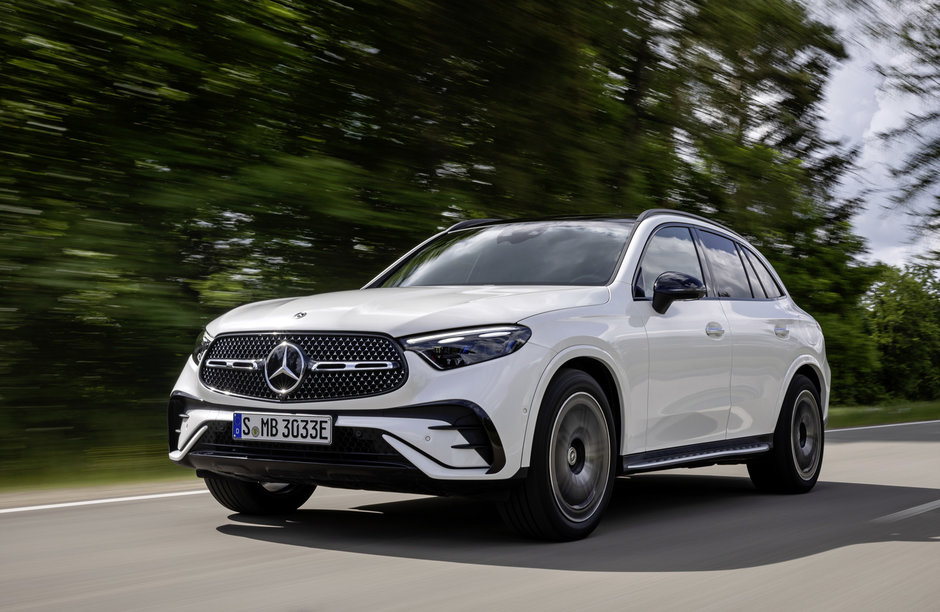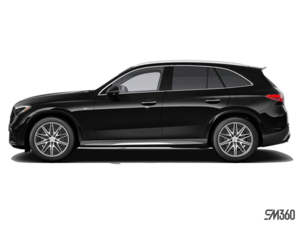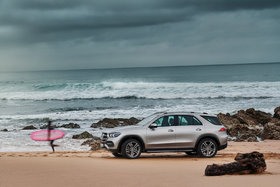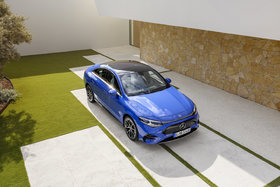Key Differences Between Mercedes-Benz Mild Hybrid, Plug-in Hybrid, and Fully Electric Vehicles
October 28 2024,

Mercedes-Benz is leading the automotive world in electrification, offering a diverse lineup that includes mild hybrids, plug-in hybrids (PHEVs), and fully electric vehicles (EVs). Each of these powertrain technologies serves a different purpose, catering to varied driving needs and preferences. Below, we take a detailed look at the key differences between these technologies and how they shape the driving experience in 2025 Mercedes-Benz vehicles.
Mild Hybrid Powertrains: A Subtle Boost in Efficiency
The mild hybrid technology found in models like the 2025 Mercedes-Benz CLE and the high-performance Mercedes-AMG CLE 53 delivers smooth power and improved efficiency without requiring charging infrastructure. A mild hybrid system integrates a 48-volt electrical system with a belt-driven starter-generator to assist the engine.
Mild hybrids offer several advantages, including smoother engine starts, brief bursts of additional torque during acceleration, and the ability to coast with the engine off at certain speeds to save fuel. In the CLE 450’s inline-6 engine, the mild hybrid system contributes to 375 horsepower while optimizing efficiency. Meanwhile, in the Mercedes-AMG CLE 53, the same technology is adapted for performance, providing enhanced responsiveness and dynamic handling.
However, because these vehicles rely primarily on internal combustion engines, their electric component is limited to energy recuperation and torque assistance. They do not offer an all-electric driving mode, distinguishing them from plug-in hybrids and fully electric vehicles.
Plug-in Hybrid Vehicles (PHEVs): Flexibility with Electric Range
Mercedes-Benz plug-in hybrids combine electric motors with gasoline engines, offering the option to drive short distances using only electric power. These models can be plugged in to charge the battery, providing greater electric range than mild hybrids and reducing fuel consumption for everyday commutes.
For instance, the 2025 Mercedes-Benz GLC 350e 4MATIC offers an 87 km all-electric range, ideal for urban driving without emissions. Similarly, the Mercedes-Benz GLE 450e PHEV provides a balance of electric capability and long-range flexibility, making it a great option for those who need a larger VUS for family or long-distance travel. These PHEVs excel at providing electric mobility for short trips while switching seamlessly to gasoline power for extended journeys.
A defining feature of plug-in hybrids is their versatility. With access to charging infrastructure, drivers can maximize electric driving. However, if charging is unavailable, the vehicle can operate solely on gasoline, alleviating range anxiety—a key reason PHEVs appeal to buyers not yet ready to transition fully to electric vehicles.
AMG E-Performance Plug-in Hybrids: Prioritizing Performance Over Range
While models like the GLC 350e and GLE 450e emphasize efficiency and electric range, Mercedes-AMG E-Performance plug-in hybrids target a different audience—those seeking high performance. These models use hybrid systems not primarily for long electric range but for immediate power delivery and enhanced dynamics.
Take the Mercedes-AMG S63 E-Performance as an example. It offers a combined output of 791 horsepower from a V8 engine paired with an electric motor, delivering breathtaking performance. While it does offer an electric-only range of just over 20 km, this range is more about providing strategic power boosts and smooth driving in urban areas than extending zero-emissions travel. This makes AMG E-Performance models more suitable for performance enthusiasts rather than those prioritizing eco-conscious driving.
Fully Electric Vehicles: Emission-Free Luxury
Mercedes-Benz’s fully electric lineup delivers a new level of efficiency and luxury with zero emissions. Models like the EQB, EQE sedan, and EQE SUV provide drivers with long electric range and advanced connectivity features without relying on gasoline engines.
For example, the EQE SUV offers a range of up to 460 km on a full charge, ensuring it can meet the needs of most daily drivers and even some long-distance commuters. The EQB provides a more compact, family-friendly electric solution, with an estimated range of around 400 km, depending on driving conditions. These vehicles rely on DC fast-charging capabilities, allowing drivers to recharge quickly and continue their journeys.
Fully electric vehicles represent the ultimate step toward sustainability, as they produce no tailpipe emissions and benefit from lower maintenance costs. However, they do depend on charging infrastructure—something that remains a consideration, particularly for those who frequently travel long distances.
Choosing the Right Powertrain for Your Needs
Each of these powertrain technologies caters to different lifestyles and driving preferences. Mild hybrids, like those in the CLE and AMG CLE models, offer incremental improvements in efficiency without requiring a charging routine. They are ideal for drivers looking for enhanced performance and smooth power delivery without altering their driving habits.
Plug-in hybrids, such as the GLC 350e and GLE 450e, provide a bridge between traditional combustion engines and fully electric vehicles. These models appeal to those who want to reduce their fuel consumption and emissions without committing fully to electric driving. The added flexibility of PHEVs ensures peace of mind on long road trips, where gasoline power can take over if needed.
Finally, the fully electric models like the EQE SUV and EQB represent the future of sustainable mobility. These vehicles are best suited for drivers with easy access to charging stations and those committed to reducing their environmental impact. With increasingly competitive ranges and improved charging infrastructure, electric vehicles are becoming more practical for a wider audience.
Conclusion
Mercedes-Benz offers a diverse selection of electrified vehicles, from mild hybrids and plug-in hybrids to fully electric models, ensuring that there is an option for every driver. Whether you seek the enhanced performance of a mild hybrid CLE, the versatility of a GLC 350e plug-in hybrid, or the zero-emission future promised by the EQE SUV, the 2025 Mercedes-Benz lineup provides solutions that balance luxury, efficiency, and innovation. As the brand continues to refine its technology, drivers can expect more advanced options tailored to meet evolving demands, ensuring that every journey behind the wheel of a Mercedes-Benz is as seamless as it is exciting.





